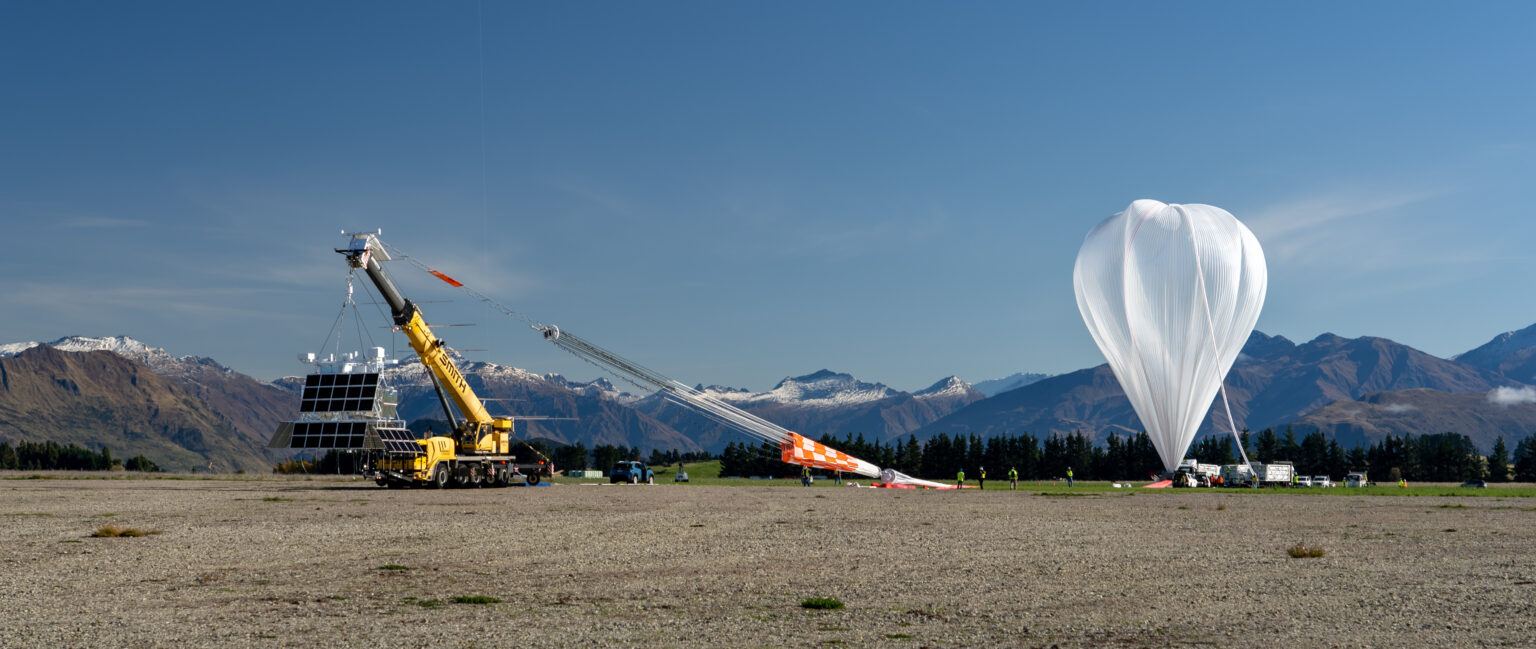NASA ditches giant 'superpressure' balloon into Pacific Ocean after anomaly
NASA's second-of-its kind high-altitude balloon sprang a leak and is now at the bottom of the Pacific Ocean.

A NASA scientific balloon flight was terminated Sunday (May 14) after the craft developed an irreparable leak about a day and a half into flight.
NASA launched the super pressure balloon (SPB) out of New Zealand's Wānaka Airport on Friday (May 12) at 8:02 p.m. EDT (0002 GMT and 12:02 p.m. local New Zealand time on Saturday, May 13). After detecting the leak and unsuccessfully attempting a fix, flight teams terminated the mission over the Pacific Ocean at 8:54 a.m. EDT on Sunday (1254 GMT; 12:54 a.m. New Zealand time on Monday, May 15).
The SPB carried the Extreme Universe Space Observatory 2 (EUSO-2) payload, which is designed to detect intergalactic, ultra-high energy cosmic ray particles falling through Earth's atmosphere. The origins of these types of particles have largely eluded researchers. Unfortunately, EUSO-2 now sits on the bottom of the ocean, and NASA has no plans for another SPB launch this year.
Related: Balloon-borne telescope lifts off to study black holes and neutron stars
"This is an unfortunate end to the mission, and we will investigate the cause to help us continue to improve the super pressure balloon technology," NASA Scientific Balloon Program Chief Debbie Fairbrother said in a NASA statement on Sunday (May 14).
EUSO-2 was the second and final SPB launch from Wānaka as a part of NASA's 2023 New Zealand balloon launch manifest. The first took to the skies on April 15 (April 16 New Zealand time) and is still flying.
That SPB floats in the stratosphere at around 100,000 feet (30,500 meters), and is currently on its fourth revolution of the Southern Hemisphere. It's carrying SuperBIT, the Super Pressure Balloon Imaging Telescope, which uses its near-space altitude to measure the amount of dark matter in galaxy clusters.
Get the Space.com Newsletter
Breaking space news, the latest updates on rocket launches, skywatching events and more!
The near-space environment these balloons explore offers tremendous savings compared to orbital launches, which can cost up to several thousand dollars per pound of payload. EUSO-2 weighed about two tons and therefore would have been quite expensive to launch to space.
The telescope served a secondary, less scientific purpose in the wake of the balloon's demise. In the event of an SPB mission loss such as this, the payload acts as an anchor for the balloon, quickly pulling it to the bottom of the ocean and away from the majority of marine life. Not dissimilar to the Pacific Ocean's "spacecraft cemetery," disposal in this way ensures safe termination with minimal environmental impact, NASA officials said.
Join our Space Forums to keep talking space on the latest missions, night sky and more! And if you have a news tip, correction or comment, let us know at: community@space.com.

Josh Dinner is the Staff Writer for Spaceflight at Space.com. He is a writer and photographer with a passion for science and space exploration, and has been working the space beat since 2016. Josh has covered the evolution of NASA's commercial spaceflight partnerships and crewed missions from the Space Coast, as well as NASA science missions and more. He also enjoys building 1:144-scale model rockets and human-flown spacecraft. Find some of Josh's launch photography on Instagram and his website, and follow him on X, where he mostly posts in haiku.
